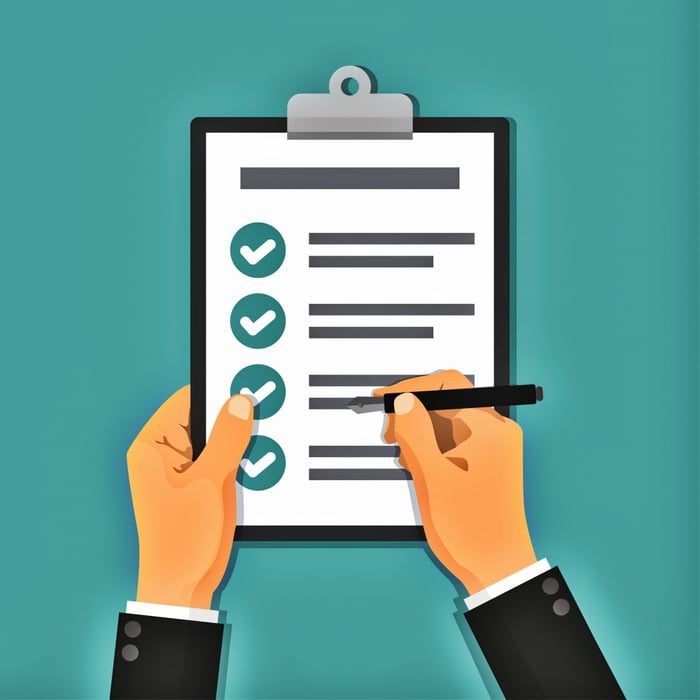
There is no way to avoid inspecting your rental units on a regular basis. Whether it’s part of the move-in process with a new tenant, an annual condition inspection, or a pre-moveout inspection to determine the work required to prepare the unit for a new tenant, identifying the key areas and components to check can speed up the process and ensure your units remain in tip-top shape and market competitive. Here’s a list of the top 10 “Suite-Spots” to check during a unit inspection:
- Kitchen Cabinetry - It goes without saying that kitchen cabinets are one of, if not the most expensive items to replace in a unit and they should always be inspected when you are inside a unit, but a simple visual inspection isn’t always enough. Always be sure to check that doors and drawers are functioning properly and that there are no issues with the hinges and closures, you don’t want the tenant to open a door and have it fall off. This also gives you an opportunity to identify if there are any issues with the shelving and that mactac hasn’t been installed and there are no pests or leaky plumbing. Identifying these issues during an inspection gives you the opportunity to fix them before they turn into major problems which require replacement of all kitchen cabinetry.
- Tub Surrounds/Shower Stalls - Anywhere water is present is an opportunity for leaks and preventing leaks will prevent huge repair costs. Tub surrounds and shower stalls likely see the most water of any area in a unit so they must be watertight. Ensuring that all tiles are present and in good condition with no cracks or grout damage will go a long way in preventing leaks but there are other areas that must be checked. The caulking where the tiles meet the bathtub should always be in good condition without cracks or mold or water will surely find a way through. Shower fixtures should also be tested to ensure proper water flow is present and that leaks behind the wall are unlikely.
- Entry Door - Having a properly functioning entry door is more important than just making sure the tenants can get into their units, they are also the first line of defense in preventing a fire from spreading between units. Make sure that the closure mechanism is functioning correctly and is able to completely close the door by itself, without the need to be pulled shut. You should also adjust the tension on the closure if the door is closing too quickly that it slams the door shut causing unnecessary noise. Lastly, ensure the lock works as intended so that tenants can be assured that they and their belongings are safe in their home.

- Windows - Windows are more than a way to let the sunshine in and brighten up a unit, they’re also a key part of the building's structure. Inspecting the glass, frame, and weather stripping to make sure they are in good condition will help keep the weather out of the unit and reduce the likelihood that they will be the source of leaks. Check that all window locks and screens are in place and functional, it will not only keep your tenants safe but it will also safeguard you from potential liabilities. Don’t forget to inspect around the windows as well, any evidence of airflow means your heating and cooling systems will have to work harder to compensate which increases your costs.
- Illegal Appliances - Depending on the configuration of your units, tenants may be prohibited from installing certain types of appliances to prevent leaks, excessive energy use, and even personal injury. Tenants who have installed these appliances will typically try to hide them by placing a tablecloth, piles of clothes, and other large belongings on and around them to make them stand out less but you can always ask them “what is that?” to make sure they are complying with the conditions of their lease. You may also have to comply with regulations of how and where window-mounted air conditioners are installed as they may pose a risk of falling on someone that is below the air conditioner.
- Smoke Detectors - Every unit should have at least one smoke detector present to alert tenants that there is smoke and possibly a fire in their unit, so ensuring they are in proper working order is a top priority. If it is battery-powered, ensure that it has a battery which has been recently changed, if not be sure to carry some with you so that you can do this where necessary. Also be sure to check the expiry date of the smoke detector, most smoke detectors expire 10 years after they are manufactured but you can check the back or side of the unit to get the exact date. Don’t forget to test the unit as well by holding the “test” button, if the alarm sounds weak that is a sign that the batteries need to be changed.
- Balconies - Balconies are a great way for residents to get fresh air and take in the view from their apartments but while you’re performing your inspection there are things you should be on the lookout for. Make sure that tenants are not using their balcony as a storage area for their belongings or garbage, it only takes one cigarette tossed from above to start a fire that damages belongings and possibly spread to other areas. Take a quick look at the structure of the balcony itself as well as any railings if they are present to make sure anyone that uses the balcony will be safe while doing so. Lastly, if the property has a problem with birds nesting and defecating on balconies consider installing bird netting to prevent them from settling in and leaving behind potentially toxic feces.
- Toilets - Toilets are often checked during an inspection to confirm that the bowl, tank, and seat are still intact however there might be issues present you can’t immediately see. Test that the shut-off valve works by turning it to the close position and flushing the toilet, if the tank does not begin to fill with water you can be sure the valve is working. When you open the valve to let the water begin to flow, verify that the supply line is in good condition and that there are no visible leaks, even a slow leak can end up damaging the floor, vanity, and possibly cause additional damage to the units below. Lastly, ensure that the tank does not run constantly, if it does it means you're wasting water and can often be solved by adjusting the float in the tank so the toilet stops filling approximately 1” below the top of the overflow tube.
- Bathroom Cabinetry - While not as expensive as kitchen cabinetry, bathroom cabinetry is also a big-ticket item if it needs to be replaced, and the fact that it is in a high water use area makes it more susceptible to damage. When inspecting the bathroom cabinetry make sure that the sink and countertop are caulked properly if not that could cause damage to both the countertop as well as the cabinet floor. Have a look inside the cabinet too, not only will this confirm if the door is in proper working order but you can also see if there is any evidence of leaks from the sink drain. Lastly, if the cabinet is sitting directly on the floor check the condition of the kick plate and cabinet sides for signs of water damage, this could be evidence of other leaks that are making the floor excessively wet.
- Evidence of Pests - This one isn’t a specific component or area that you need to inspect, it’s something you should always be on the lookout for whenever you are conducting any sort of inspection. Pests themselves are not always visible but often leave behind clues to let you know they are there. With mice and rats, you're likely to find droppings inside cabinetry where food is present. Despite their name, bedbugs can be found in many places inside a unit other than beds such as walls and ceilings. They appear and groups of very tiny black dots and can attach themselves to your clothing very easily if you touch them and can potentially spread to other parts of the property, even your house. Also, check the floor moldings & trim to see if critters are scurrying beneath, always best to have these caulked tight to prevent pests from spreading between units.
Regularly inspecting your units is a great way to fix small issues before they turn into big expenses and it will also let your tenants know that you are looking to keep them in as good of a condition as possible. The items we have just listed represent some of the key items that, if not checked, can result in high repair costs, a major frustration for tenants, and damages that can spread outside the unit containing the source of the problem. We recommend inspecting your units at least once a year while occupied to keep these, and all items inside the unit in great condition.
SuiteSpot’s mobile inspections provide all of the tools required to conduct and manage inspections and their related processes. Customizable inspection templates allow you to account for differences in property and unit configurations and our robust analytics engine allows you to forecast renovation costs to build budgets based on the most recent inspection of a unit. When used in conjunction with SuiteSpot’s mobile work orders, staff can be automatically assigned to repair any defects.
Download the SuiteSpot brochure to learn more about our solution or request a demo.





.png)
